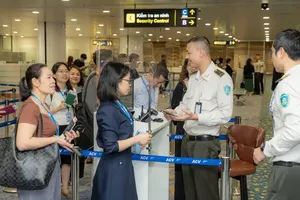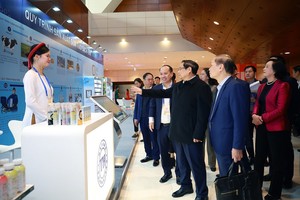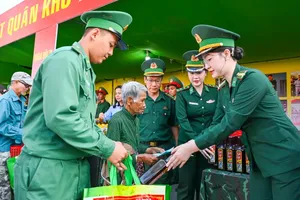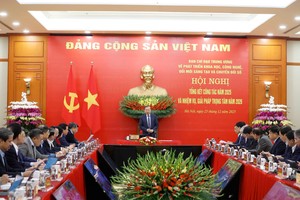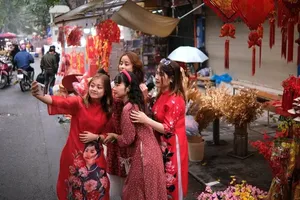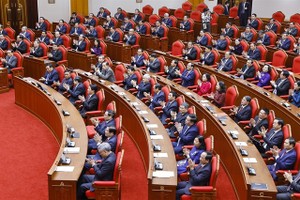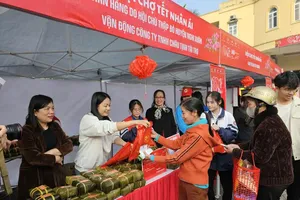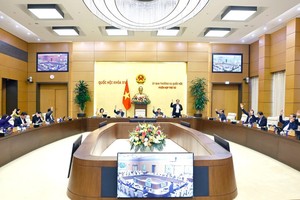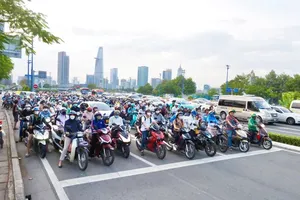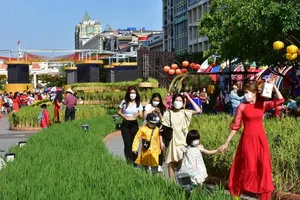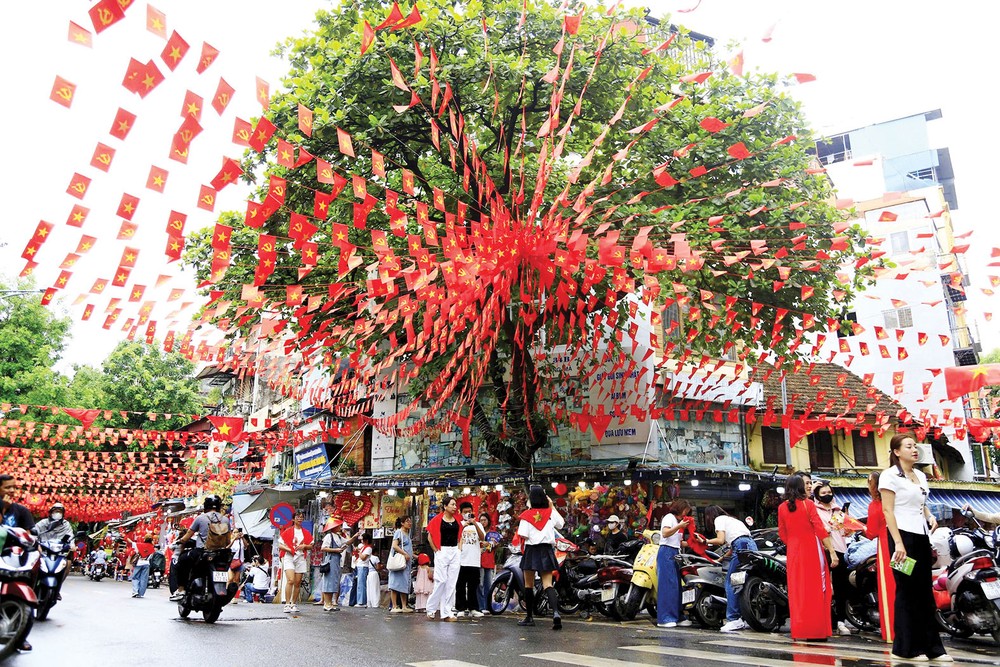
This August, Hanoi’s streets are awash in red—national flags fluttering, celebratory banners unfurled, and throngs of people filling the boulevards—creating a festive, expectant atmosphere as the capital marks the 80th anniversary of the August Revolution and National Day.
A city draped in celebration
Along major arteries such as Doc Lap, Trang Tien, Dien Bien Phu, Le Thai To, Kim Ma, and Nguyen Chi Thanh, giant billboards stand out against a sea of flags. At Ba Dinh Square, propaganda panels are displayed with solemn dignity. Beyond the central streets, houses, shops, and alleyways in the Old Quarter are adorned with banners and flags, giving the city a bright and vibrant facelift.
On bustling commercial streets, especially Hang Ma, shoppers flock to stores to buy festive items—red flags with yellow stars, T-shirts emblazoned with patriotic slogans, and decorations inspired by historical motifs. The busy trading scene turns the Old Quarter into a lively “festival cloak.”
Cao Van Hoan, owner of a shop at 18 Hang Ma, shared, “This year, the number of visitors, shoppers, and photo-takers has surged, peaking between 9 and 11 a.m. when the street is packed. Compared to April 30, customer traffic has tripled. The bestsellers remain the national flag and patriotic T-shirts.”
Beyond commerce, local shopkeepers are also contributing to the jubilant spirit. According to Hoan, businesses pooled together to string 10–20 lines of flags each, transforming Hang Ma into a “sea of red and yellow stars.” By nightfall, the street glows like a carnival, attracting crowds of residents and tourists eager to stroll and take photos.
Meanwhile, city workers are working tirelessly along Hanoi’s main thoroughfares—sweeping streets, trimming trees, and refreshing flower beds—embodying the beauty of labor as they prepare the capital to shine in its most radiant and dignified form for this historic occasion.
The pull of history
Alongside the festivities in the streets, museums and historical sites are drawing thousands of visitors daily. At the Vietnam Military History Museum, people of all ages—from locals to tourists—line up to purchase tickets, eager to relive the nation’s heroic past through artifacts and stories.
Of particular note is 48 Hang Ngang, where President Ho Chi Minh drafted the Declaration of Independence in 1945. Ms. Ngo Thi Minh Tam, Deputy Head of the Heritage Management Department under the Hanoi Management Board for Heritage Sites and Scenic Landscapes, announced that the site will be open free of charge every day until September 2. “This is a meaningful initiative that brings the public closer to the sacred values of history,” she said.
Other historic landmarks have also been refurbished and reopened to welcome visitors, including 50 Ham Long (where the first Communist Party cell was founded in 1929), 90 Tho Nhuom (where General Secretary Tran Phu drafted the first Political Thesis), and Van Phuc Silk Village (where President Ho Chi Minh issued the Call for National Resistance in 1946).
“Since the commemoration of President Ho Chi Minh’s birthday on May 19, visitor numbers at historical sites under our management have risen by about 30 percent, many of them young people. This is an encouraging sign that the younger generation is increasingly interested in exploring history and honoring those who came before,” Ms. Ngo Thi Minh Tam added.
For many visitors, the dazzling streets adorned with flags and flowers, alongside solemn historic landmarks, stand as vivid testimony to the power of unity and the deep pride in the nation’s heritage that continues to resonate among Hanoians and Vietnamese across the country.

